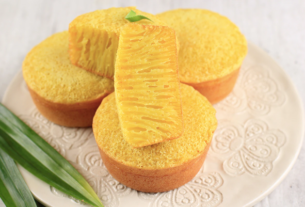Due to its brilliant pink-coloured architecture, Jaipur, the capital city of Rajasthan, is also known as the “Pink City” in India. With its extensive history, gorgeous palaces, thriving markets, and vibrant culture, Jaipur has a wide range of tourist attractions. We shall examine the best attractions in Jaipur in this post, offering a thorough overview for anyone considering a vacation to this fascinating city.
The Raja of Amber, Jai Singh II, founded Jaipur in 1727, which is when the city first became known as Jaipur. The rapidly expanding population and the escalating water shortage led him to move his capital from Amber to the new metropolis. The city was constructed on the accepted Vastu Shastra principles by renowned architect Vidyacharan Bhattacharya. Whether you’re travelling for business or just here for a short trip, book a room in Holiday Inn in Jaipur for a comfortable stay.
Here are some of the places to visit in Jaipur:
- The Amber Fort is a magnificent fortification perched atop a hill and is one of Jaipur’s most recognizable sights. The fort, which dates back to the 16th century, exhibits an exquisite fusion of Hindu and Mughal architectural traditions. Visitors can see its magnificent courtyards, palaces, Sheesh Mahal (Palace of Mirrors), and elaborate mirrorwork. For a spectacular experience, it is advised to ride an elephant or a jeep up to the fort.
- Hawa Mahal, also referred to as the “Palace of Winds,” is a masterpiece of architecture and a well-known representation of Jaipur. This five-story castle has a distinctive façade with numerous tiny windows and screens that let in mild breezes. It was constructed so that the royal women might covertly witness public celebrations and everyday life. From the top, visitors may observe the beautiful lattice work and take in sweeping views of the city.
- City Palace: The City Palace is a magnificent complex that includes a number of palaces, gardens, and museums. The royal family continues to reside in the complex’s Chandra Mahal.
- Maharaja Sawai Jai Singh II constructed the astronomical observatory known as Jantar Mantar, which is now a UNESCO World Heritage Site. Nineteen architectural astronomical instruments that were used to keep track of celestial bodies, measure time, and observe astronomical events are displayed there. Visitors can explore the history of Indian astronomy and be astounded by the accuracy of these instruments.
- Nahargarh Fort: This fort, perched atop the Aravalli Hills, provides beautiful views of the surroundings of Jaipur. Originally designed as a defensive fort, it is now a well-liked tourist destination. The fort’s various palaces, gardens, and buildings are open for visitors to explore. Additionally, the fort is home to the Nahargarh Biological Park, where visitors can witness various animals like tigers, leopards, and unusual birds.
- Jaigarh Fort, also referred to as the “Victory Fort,” is situated on the same hill as the Amber Fort. The Amber Fort and the city of Jaipur were intended to be protected. Jaivana, the largest cannon on wheels in the world, is housed at the fort, which also provides sweeping views of the region. Its palaces, gardens, and museum, which showcase weaponry and treasures from antiquity, are all open to visitors.
- The oldest museum in Rajasthan is the Albert Hall Museum, which is located in the centre of Jaipur. The museum, which is housed in a magnificent Indo-Saracenic structure, features a sizable collection of antiquities, including sculptures, paintings, carpets, pottery, and weaponry. It gives information on Rajasthan’s extensive cultural heritage.
- Jal Mahal: This beautiful palace, which seems to float on the water, is situated within the Man Sagar Lake. The palace, which was constructed in the Rajput architectural style, features an exquisite mix of red sandstone and elaborate marblework. Although guests are not permitted inside the palace, they can still take boat trips and take in the scenery.
- The majestic Hindu temple known as Birla Mandir, sometimes referred to as the Laxmi Narayan Temple, is devoted to Lord Vishnu and Goddess Laxmi. The temple, which is made of pure white marble, features elaborate carvings and sculptures. Its expansive halls, magnificent gardens, and temple are all open to visitors at night.
- Markets in Jaipur: Visiting this city wouldn’t be complete without perusing its thriving markets. The magnificent jewellery, fabrics, handicrafts, and traditional Rajasthani clothing found in Johari Bazaar, Tripolia Bazaar, and Bapu Bazaar have earned them fame. Shoppers can splurge on vibrant fabrics, precious stones, leather products, pottery, and Jaipur’s famous blue pottery.
- Chokhi Dhani: Chokhi Dhani is a must-visit if you want to see Rajasthan in its truest form. It is a cultural village that provides a window into Rajasthan’s traditional way of life. Folk dances, puppet shows, camel and elephant rides, as well as traditional Rajasthani food, are available for visitors to enjoy.
- Galta Ji Temple is a prominent Hindu pilgrimage destination, located amidst the Aravalli Hills. It is also called the “Monkey Temple,” and there are lots of monkeys living there. The temple complex includes a number of temples dedicated to various deities as well as holy water tanks. Visitors can enjoy the tranquil atmosphere by taking a plunge in the holy water.
- Sisodia Rani Garden: A peaceful oasis away from the bustle of the city, this garden was created in memory of Queen Sisodia of Jaipur. Visitors can meander around the exquisitely planted gardens, fountains, and pavilions while taking in the vivid paintings that depict Radha and Lord Krishna’s love story.
The largest free literary event in the world, the Jaipur Literature event, cannot be missed if you are in Jaipur in January. It draws well-known writers, poets, and speakers from all over the world and provides a lively forum for debates, book releases, and cultural performances.
- Elefantastic: An elephant farm offering a rare chance to engage with elephants, Elefantastic is situated outside of Jaipur. Elephants can be fed, bathed, and painted, and visitors can also learn about elephant conservation and welfare. For animal lovers in particular, it is a memorable and instructive experience.
To sum up, Jaipur is an alluring city that provides a variety of historical, cultural, and architectural marvels. One can visit Every traveller may find something to enjoy in Jaipur, from grand forts and palaces to bustling markets and cultural events. One can stay in Holiday Inn in Jaipur to make your trip a memorable one. Whether you enjoy history, architecture, or exploring different cultures, Pink City will awe you with its grandeur and charm.





